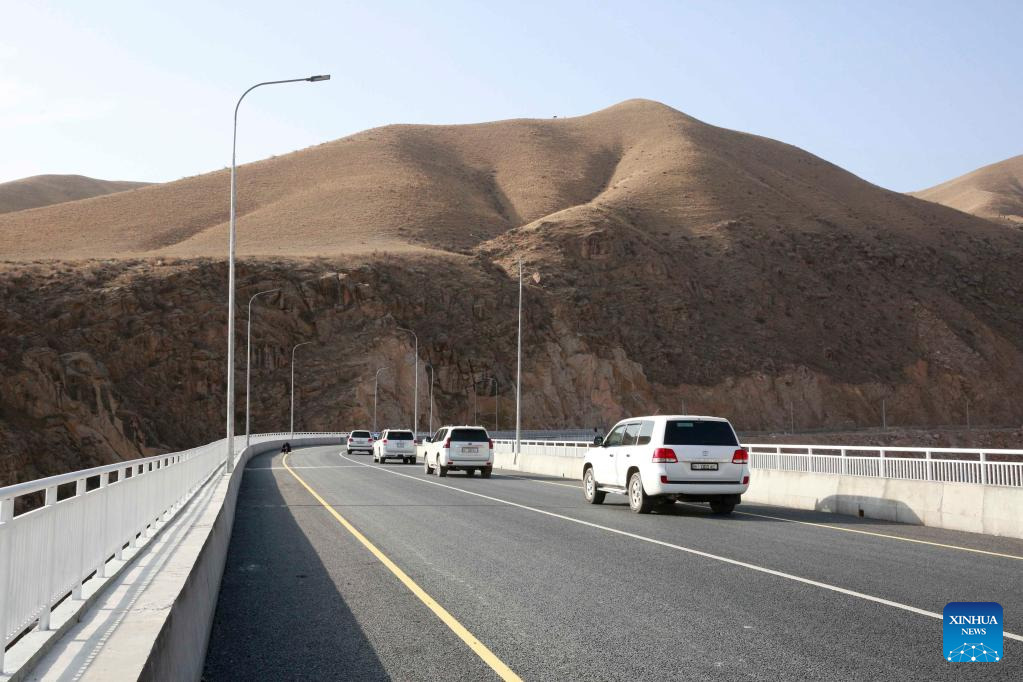A new highway built by China within the framework of the Belt and Road Initiative (BRI) will not only help Kyrgyzstan in economic development through boosting road connectivity, but also create international transport corridors that will promote growth throughout Central Asia, Kyrgyz specialists have said.
Tagai Alimbaev, Asian Development Bank project monitoring and public relations specialist of the Ministry of Transport of Kyrgyzstan, pointed out the strategic importance of a highway with a length of 433 km for the development of Kyrgyzstan in a recent interview with Xinhua.
He said that as currently, only the Bishkek-Osh highway connects the northern and southern parts of the country, the construction of an additional motorway will create both economic and social growth opportunities for all regions along the route.
“In addition, the north-south highway will open up opportunities for the construction of hydropower stations, the development of mines, deposits located in remote mountainous areas,” Alimbaev said.
The construction of the road is divided into three phases with two phases having already been completed by China Road and Bridge Corporation. The third phase is under construction.
After the completion of the project, the north-south highway will become the main transport artery connecting the north and the south of Kyrgyzstan and an important international transport channel in Central Asia.
“That is, we already have concrete results from cooperation within the framework of the BRI project. Such projects will help the economic development of Kyrgyzstan, as well as create international transport corridors that will promote growth throughout Central Asia,” Alimbaev said.
He also recalled that within the framework of the BRI, other roads are planned to be built, for example the China-Kyrgyzstan-Uzbekistan railway, which will enable an economic breakthrough for the countries of the Central Asian region.
He noted that positive relations between countries and trade always lead to mutual growth.
His opinion is echoed by Sherdali Baktygulov, an expert from the National Institute for Strategic Studies of the Kyrgyz Republic.
“The north-south road already serves as an important link in cooperation between countries and international trade, primarily between China, Kyrgyzstan, Kazakhstan and Russia. Thanks to the initiative, the volume of trade between Kyrgyzstan and China has been growing annually in the past 10 years,” he said.
The expert stressed that the north-south road is twice as long as the existing Bishkek-Osh highway, which links the two parts of Kyrgyzstan, and this makes it possible to halve the cost of transporting goods from China, from the northern part of Kyrgyzstan to the south, and then to Uzbekistan and Tajikistan.
Thanks to the BRI and the road transport corridors that exist in Central Asian countries, very beneficial relationships are being built between Kyrgyzstan, Kazakhstan, Uzbekistan, Tajikistan and Turkmenistan as well as their large trading partner — China, he said.
“And for Kyrgyzstan this is an access to sea routes through China. Sending goods through the territory of Central Asian countries to Southern Europe, Türkiye, Iran is important not only for China, but also for Central Asian countries that want to supply their goods to the countries of Southeast Asia through Chinese ports,” Baktygulov said.
He said the aim is to strengthen political, financial, economic cooperation and people-to-people exchanges between the countries participating in the initiative.
Currently, the number of Kyrgyz citizens studying in Chinese universities is more than 5,000 people, he said.
“This indicator shows that China is seen as a good neighbor whose intentions are aimed at strengthening friendship and cooperation between countries. Therefore, when we talk about the BRI, one must evaluate not only the economic effect, but also the foundation that is being laid for long-term cooperation between countries and peoples,” the expert said.


